Mission: Alternative - Stjärnsund
This is the blog series Mission: Alternative on exploring alternative, non-city-based lifestyles in Sweden. It's based on short visits to people who've taken the step to create their dream life. I want to understand whether I can live as they do, to inspire others to contemplate on their dream life and provide working examples.
Episode 1. Ecocommunity in Stjärnsund
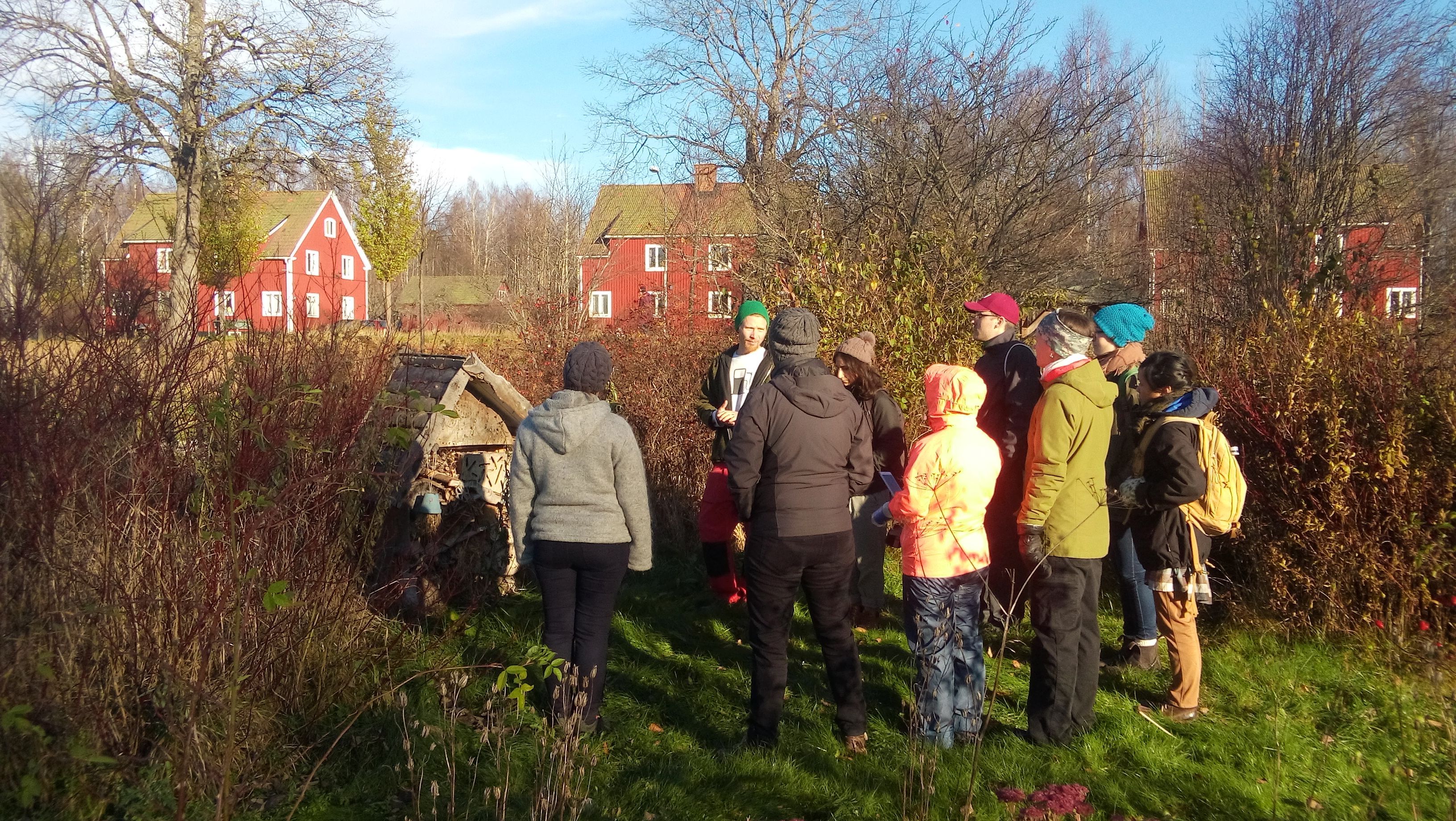
This is us, the study group, visiting the ecocommunity in Stjärnsund in November 2017. We stand in front of the "five-star" insect hotel and David Roxendal explains the importance of inviting insects to increase local biodiversity.
Prelude. Walking in the footsteps of the father of the Swedish mechanics
In 1687, a man named Christopher Polhem came to Uppsala to repair the broken clock on the cathedral. He was a handy man and fixed the clock. He was then introduced to the mining industry and managed to make several improvements that later led to a huge mining expansion and economic growth in Sweden. Polhem was later called the father of the Swedish mechanics.
Below is a flatrod system that he invented that enabled mining operations to be performed much more efficiently with the help of power from water. The water wheel could be several kilometers away from the site that needed to be powered.
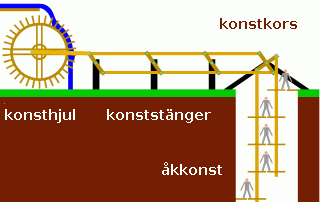
One of Polhem's many innovations: force transmission from a water wheel with the help of wooden rods, a so-called flatrod system.
In 1700 Polhem co-founded a clock manufacturing company in the small village of Sund together with his colleague Stierncrona, and so the village was renamed Stiernsund. Polhem's clock design lives to this day through a small company in the same village, Stiernsunds ur. Ironically, their street address is Urmakarvägen (=Clock-maker street).
Stjärnsund is situated in southern Dalarna county. Read more: stjarnsund.com.
Meeting David Roxendal, the tiny house builder
Our study group consisted of 9 people from Stockholm, Uppsala and Gävle and without us knowing, we went in the footsteps of the father of the Swedish mechanics, ending up in Stjärnsund after hours of train and car ride, passing two county borders and hundreds of kilometers. We were greeted by David next to the Fridhem house (=peace house) which is an all-in-one local center with a hostel, art gallery, café and shops. David lives next to a small lake in a village with ~160 people. He is part of an ecocommunity with ~40 members spread out across an area of 20 km in radius, who help each other with farming and repairing during common work days. Originally David worked as a programmer, but changed lifestyle and moved here where he felt much better at heart.
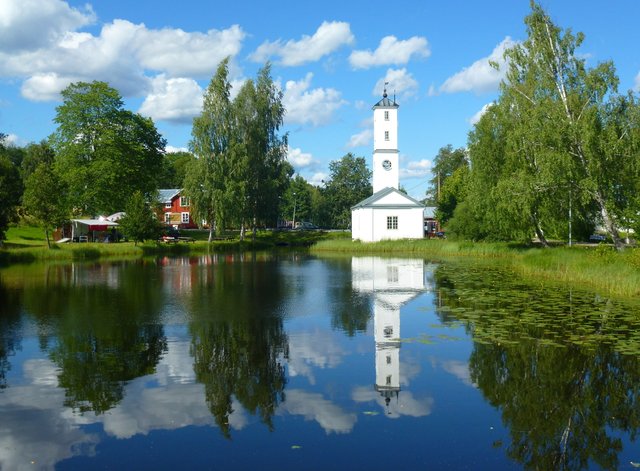
Stjärnsund's fire station during Summer.
What is permaculture? Permaculture is based on how nature works and how people work. Its main principle is "closed loop, no waste". Read more: what is permaculture.
As we introduced ourselves, David got to know that we've had a varying degree of farming experience and that it mostly came down to being or not being able to grow plants on the window ledge.
"Pot planting stage - that's where I am". / A group member about her farming skills.
To most of us, this was the first contact with people being self-reliant on food and income. So David kindly took us on an in-depth tour around his farmyard.
Entering the construction zone
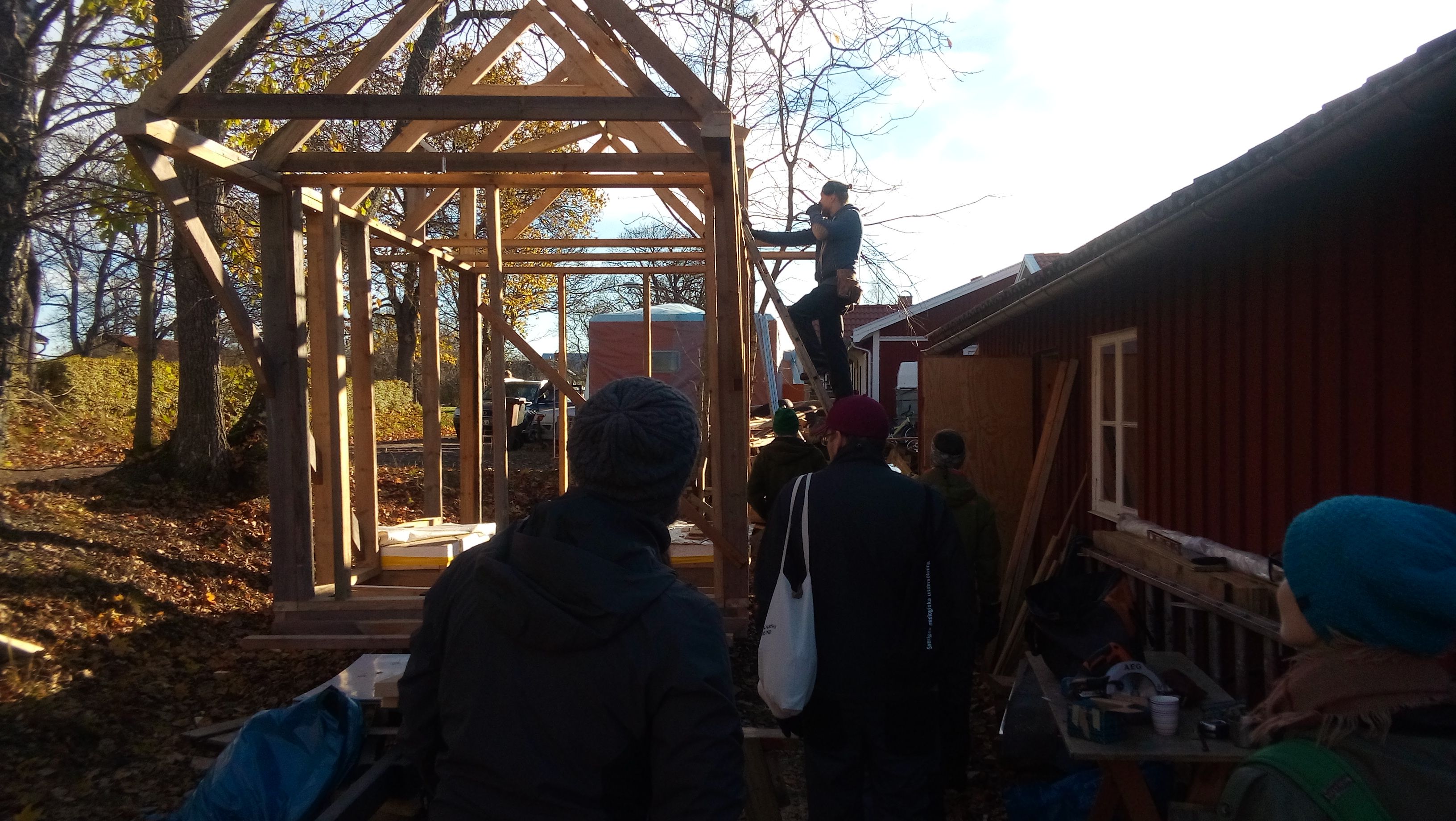
David's brother could be seen and heard hammering on a tiny house.
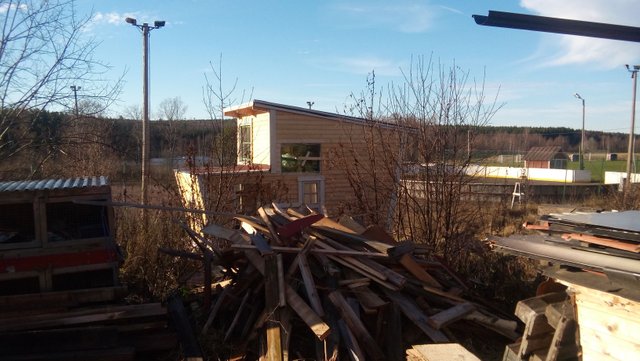
Another tiny house that was made by some guests.
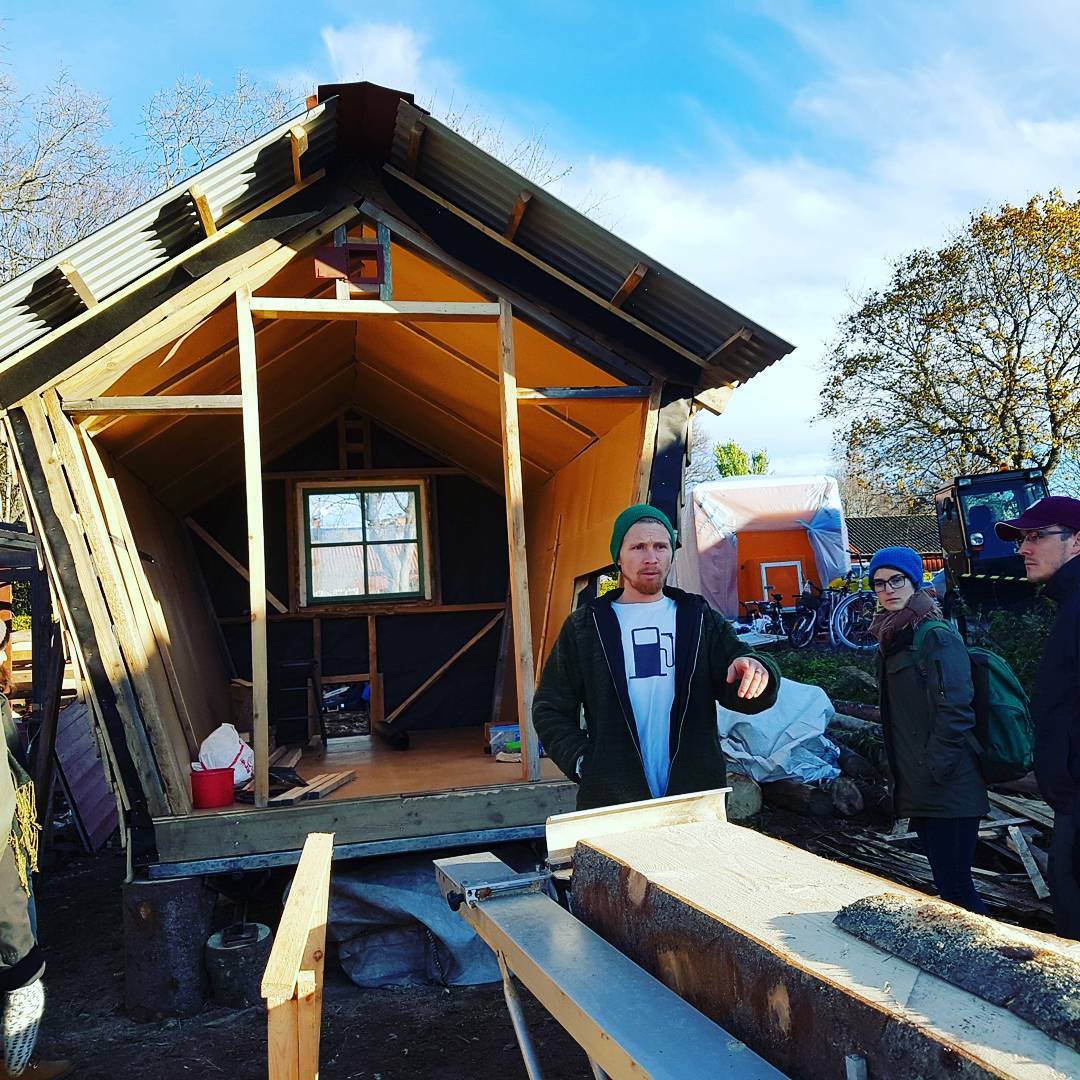
David Roxendal is pointing at the log-cutting machine that greatly improved their house-construction speed. It was bought with the help of an EU grant.
Below is a very nice tiny house that not only fits in to the heritage-listed houses in the area, but fits in under bridges on the road, leaving a small gap. It took 3 days to drive it here with a speed limit of 35 km/h.
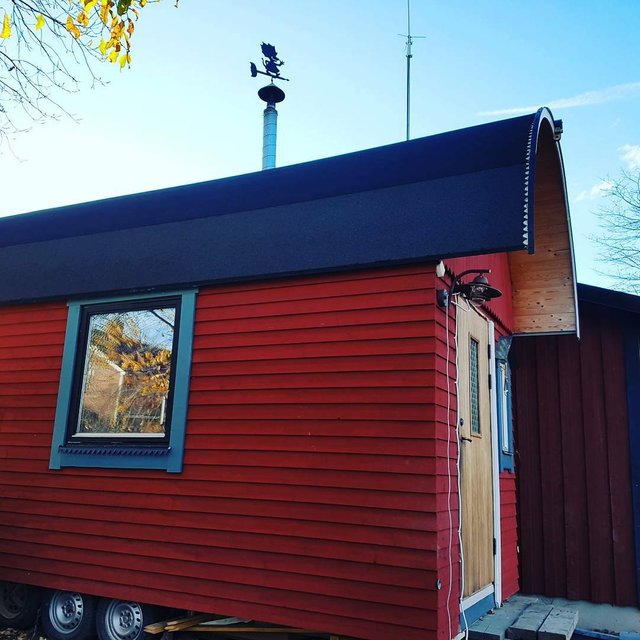
A well-built tiny house according to all laws and rules.
Next we checked the sauna. The dark-colored planks have been smeared with tar as a layer of protection. The houses they build get insulated with sheep wool from nearby farmers, making everything very local.
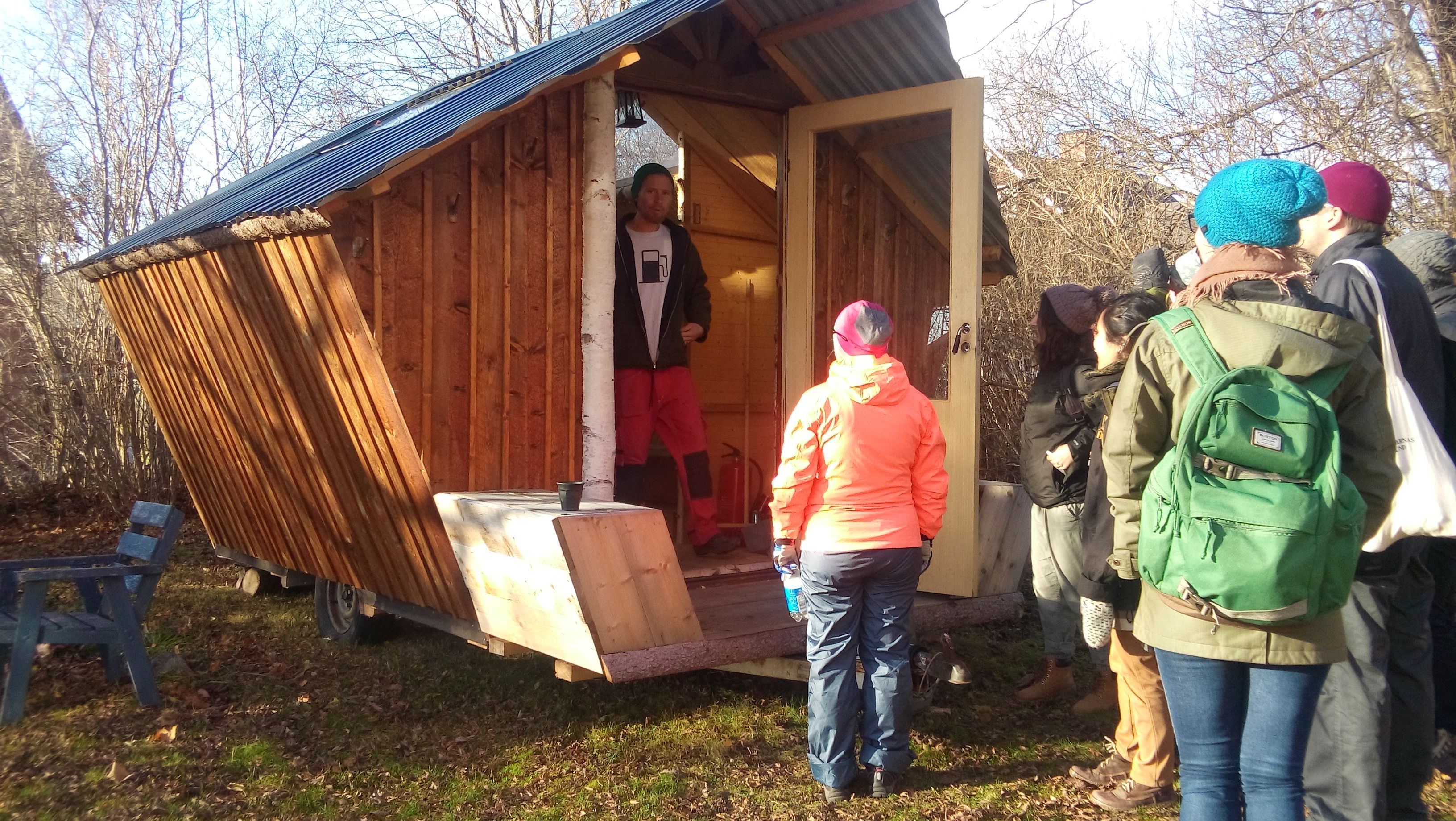
Sauna on wheels. It is often rented and taken for a ride!
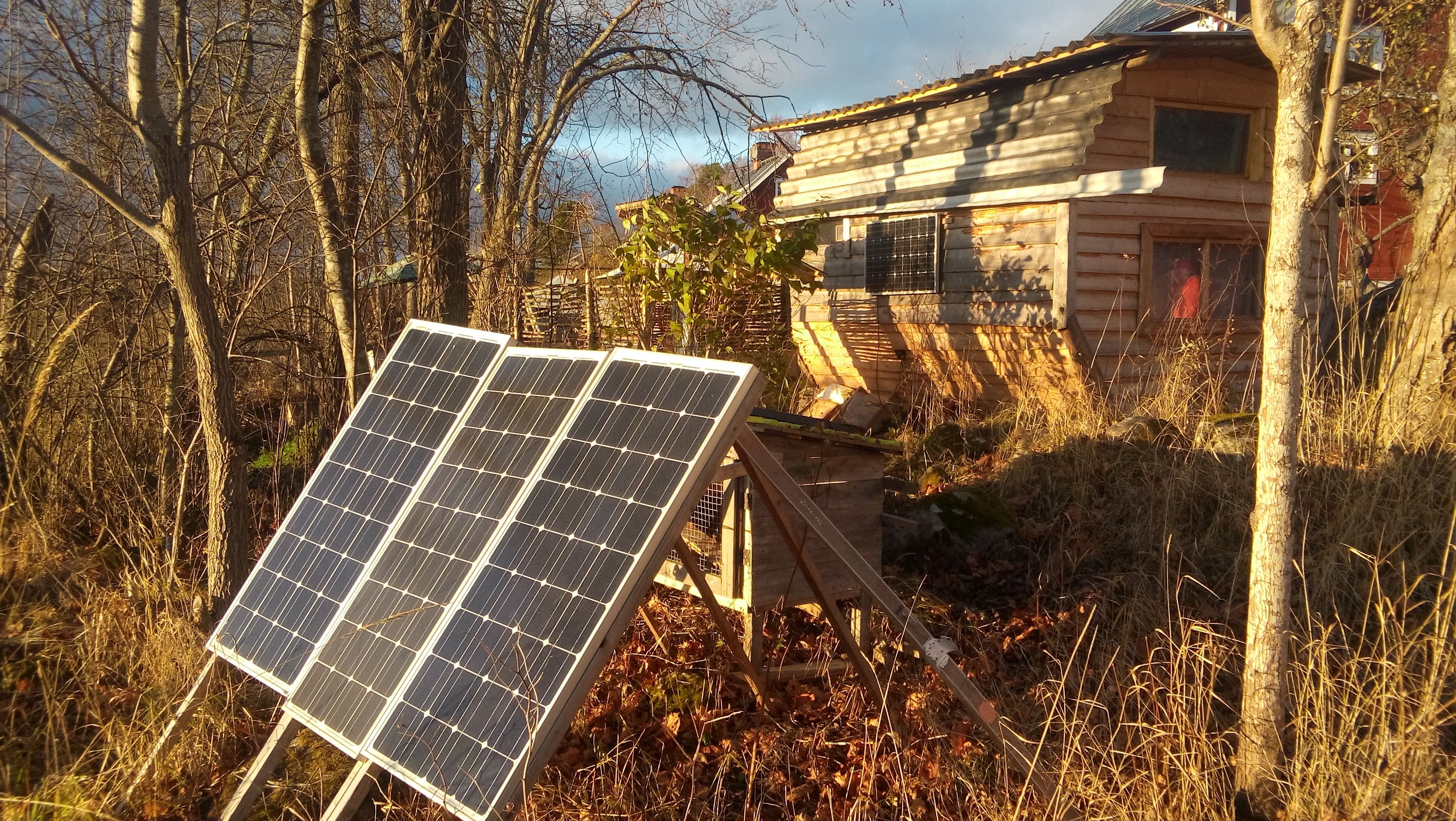
Showing their own house with a livable area of roughly 6 sqm (65 sqft).
"Vi bor litet men lever stort" (=Our house is small but we live big) /David comparing his current lifestyle with the city life.
Moving on into the farming zone
Zones. The permaculture design phase includes a step to subdivide the farm into zones based on where people physically spend most and least of their time during the day. It's very intuitive - the high-activity zone is closest to the house and that's also where you'd put the crops that need the most care so wouldn't have to walk far, whereas the lesser-active zones would have the more autonomous areas. Of course the zones differ for every person, but in general they make up a good base for further planning.
Next we came to the farming zone where David and his wife had planted trees, vegetables and berries, everything according to strict permaculture principles. Following the principles means that one creates more biodiversity than there is currently, and plans for very long-term effects. David talked about trees being planted now and what they would be like in 40 years or 200 years. Compared to the city life where infrastructure has a designed life of roughly 100 years, this felt like a breath of fresh air.
He taught us the wind barrier technique by planting willow to raise the average local temperature by a few degrees to create better growing conditions. He showed us the artificial pond technique that creates a microclimate by evening out local temperature variations. David taught us also an artificial soil improvement technique called Hügelkultur bed. It mimics nature when trees fall in the forests, begin to decompose and provide a natural habitat for insects and soak up water. In David's case, he put wood debris and plant materials in an elongated pile to rot. The process takes many years to complete. And he taught us the symbiosis or companion planting technique, which for example involved the nitrogen-fixing sea buckthorn shrub (Hippophae rhamnoides) together with rhubarb (if I remember correctly).
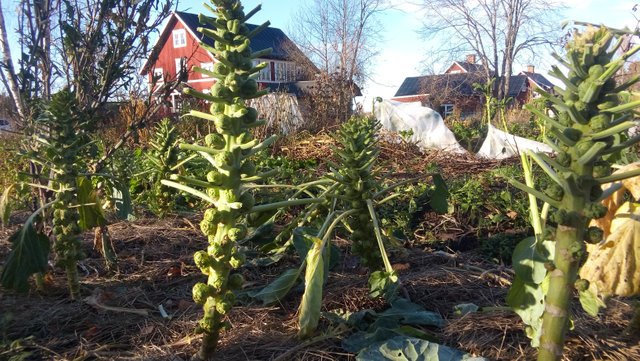
Brussel sprouts (Brassica oleracea).

An example of garden design. Trees and bushes are planted depending on height as indicated by the red line, the tallest planted further north to not block the sunlight from the south.
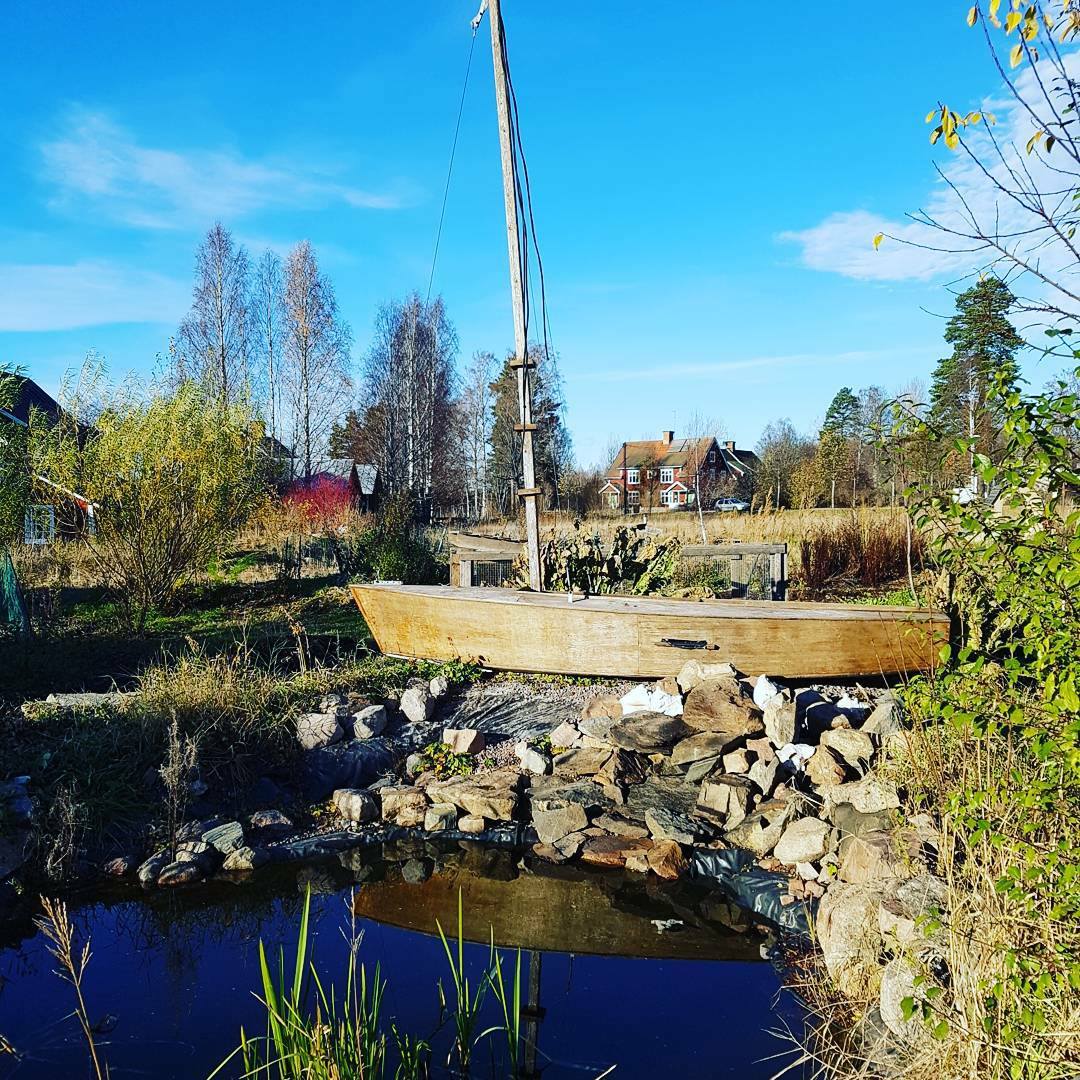
Artificial pond with stranded ship. The cattails that grow around the pond are edible, both the top and bottom parts.
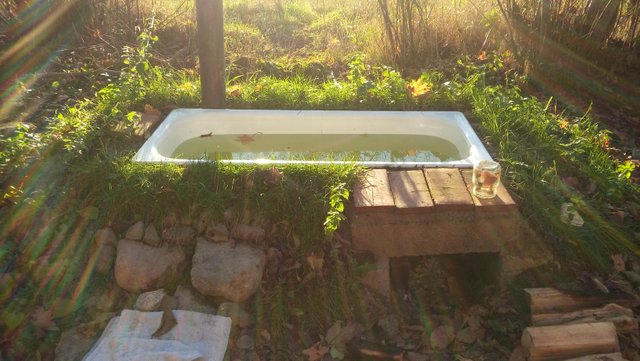
Another "artificial pond", which really is a heated bath tub that David and Eliza use :D what a view!
This is a delicious superberry, in the oleaster family - the same family as sea buckthorn (sv: havtorn). I really want to grow this at home now!
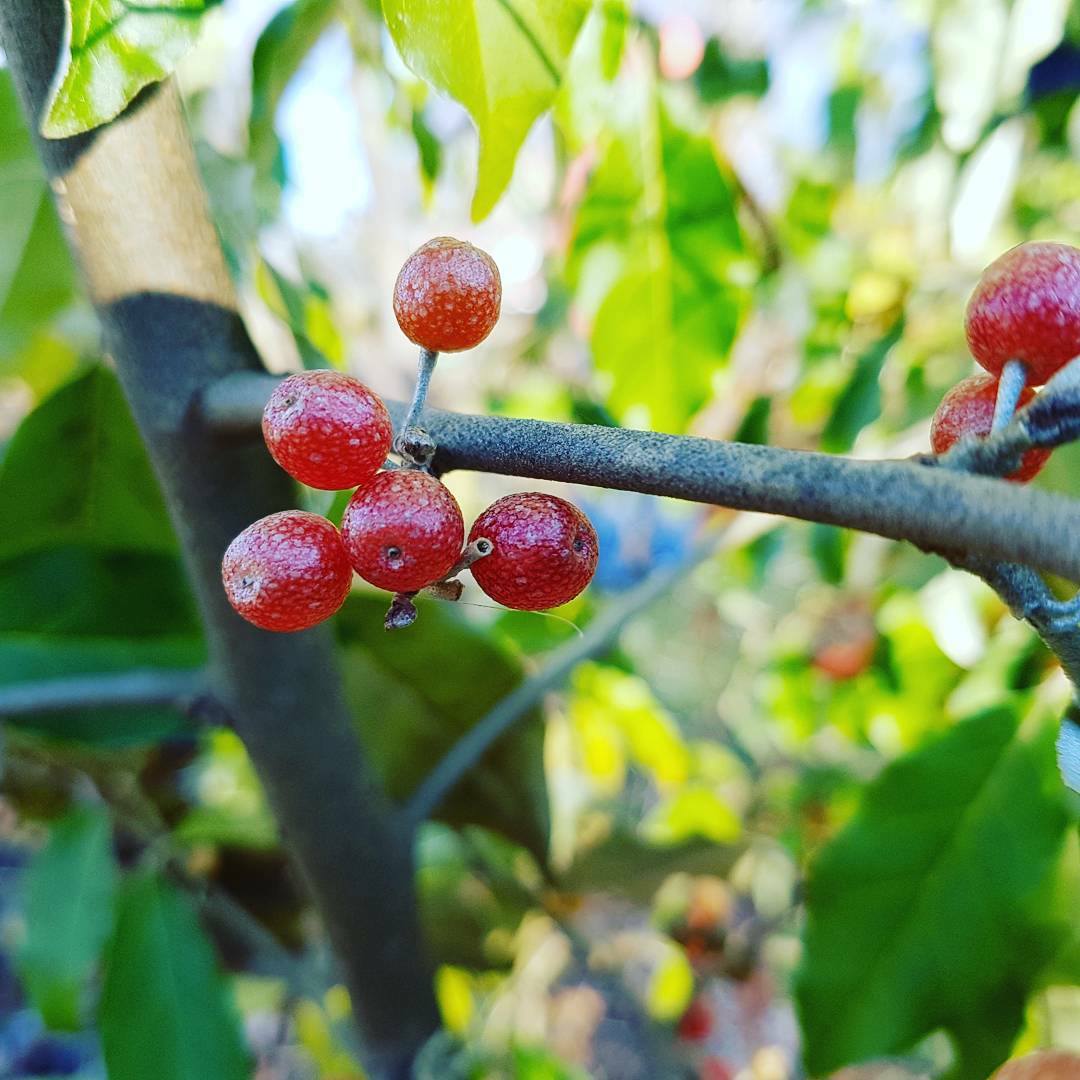
Japanese silverberry (sv: koreansk silverbuske, lat: elaeagnus umbellata).
We also went to see the rocket mass heater which is a stove that stores the heat in the ground. Inside the mass heater there are meandering tunnels where the hot gases heat up the surrounding clay and rock mass.
Some other things we learnt were that they used to have rabbits, that they grow grapes and peaches (!) and that there are enough apples to squeeze 200L of apple juice every year. Pretty neat I must say, that is a big saving of shopping for apple juice if one discounts for the work put into the squeezing.
Relaxing in the kitchen zone
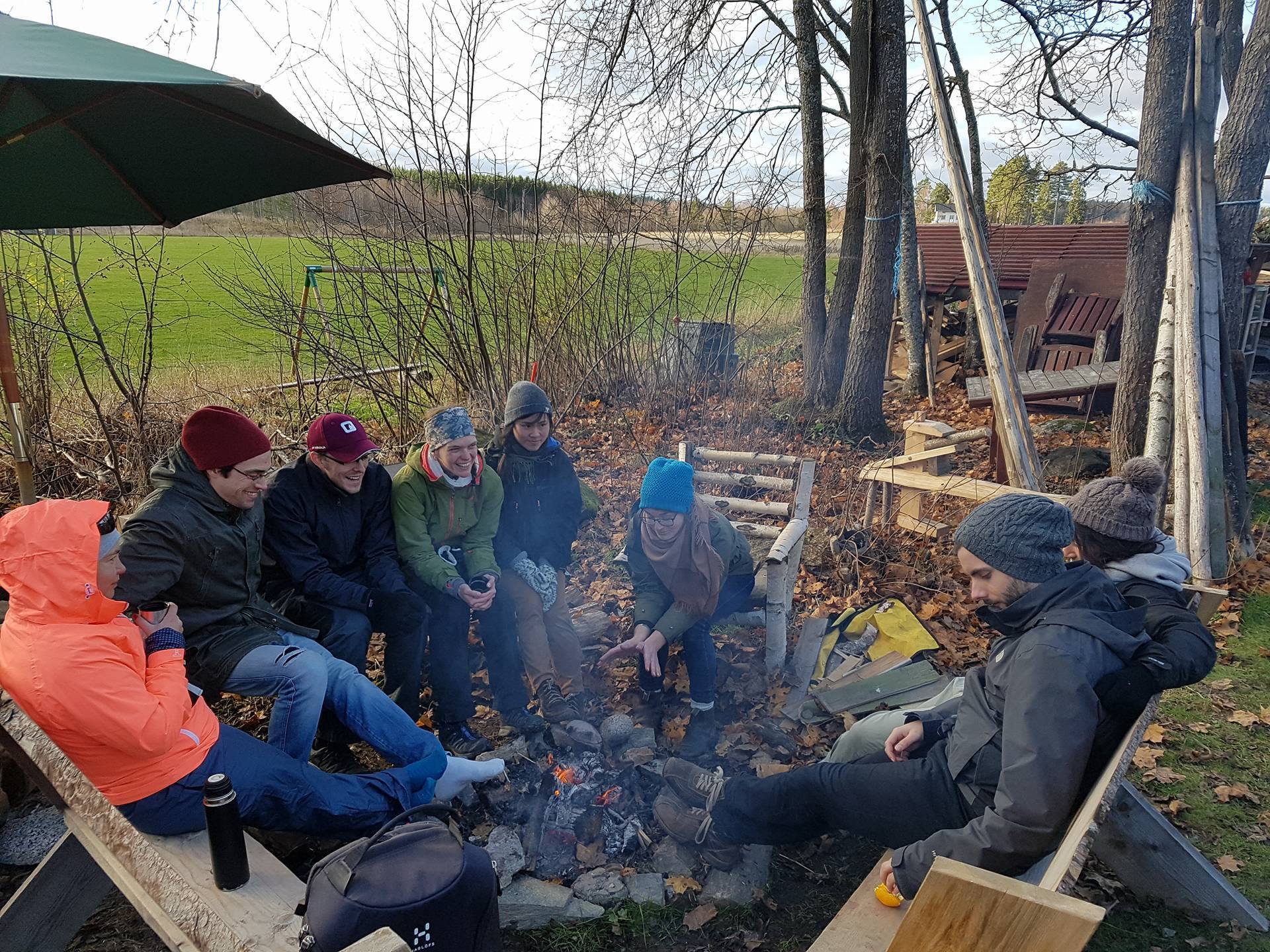
Relaxing after the guided tour.
Having bought a few kilos of local organic potatoes from the basement that keeps a pretty steady 12°C during the year, we made a fire in the outdoor kitchen and asked each other about the experience. For some it was eye-opening to just see that it could be done, that there were people living far away from a city and were mostly independent. Others got ideas of trying to grow more food at home. For some it would be very hard to give up the luxuries of the city life, mainly giving up the job because it would be too far to commute from a place like this. For myself, I would feel too isolated without a public transport connection - in this case there were no buses on the weekends. And I would feel too attached not being able to travel somewhere for a few weeks, if I would worry about ruining next year's harvest. I wonder how much manual labor there is since I always just want to automate it away to free up time. But I really enjoyed the warm, welcoming atmosphere, people not locking their doors. The big space in the open kitchen felt very natural to me because I imagine lots of friends cooking together, laughing, chatting and being creative.
If you're reading and thinking about taking the step to becoming self-sufficient, start first by becoming self-reliant in some aspect. Don't take things too seriously, have fun trying out and exploring and it doesn't have to be perfect from the start. There are still things that they don't produce themselves that they need to buy elsewhere - cheese, salt and pepper from the store and milk and meat from local farmers.
Eliza, David and his brothers started this primarily as a lifestyle, not as a business. The important factor was that they already had land where they could start experimenting. I'm very grateful to them letting us peek into their lives very openly.
I think that David and Eliza managed to build up what they need in order to survive. I liked that their income sources are distributed following the every little helps-principle (många bäckar små), including building and repairing bikes, holding courses related to house construction and permaculture, selling produce on the local market and renting out their guest cabin on wheels registered at AirBnB which welcomes travelling guests anytime. However, David mentioned that you can always be much more business-oriented if you like (read more: Ridgedale Permaculture).
Below is how the kitchen looks like.
Future outlook
Stjärnsund was labeled Sweden's sustainability Mecca by a documentary on national television, so I was interested whether David gets enough private space in his own house. He said that he was happy with the media attention and that this is the life they chose to live.
Everything that they build is placed on a metal frame with wheels in case the houses would need to be moved. This may happen since the permanent buildings around Stjärnsund are heritage-listed and don't allow for expansion. But despite petty legalities, the municipality has been helpful in many ways, such as financially supporting some construction projects. David and Eliza's work turned a declining demographics trend in Stjärnsund and they have more courageous plans for creating permaculture on a big scale.
Thank you to David and Eliza for having us and to everyone in the group that could share this beautiful sunny day together!
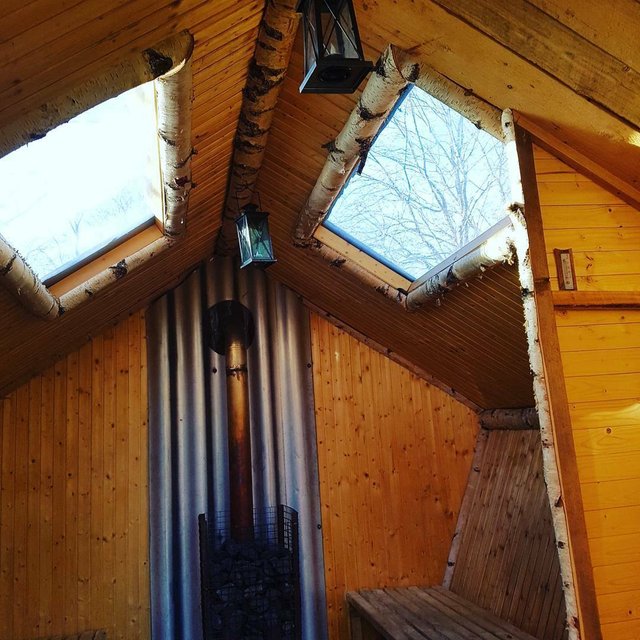
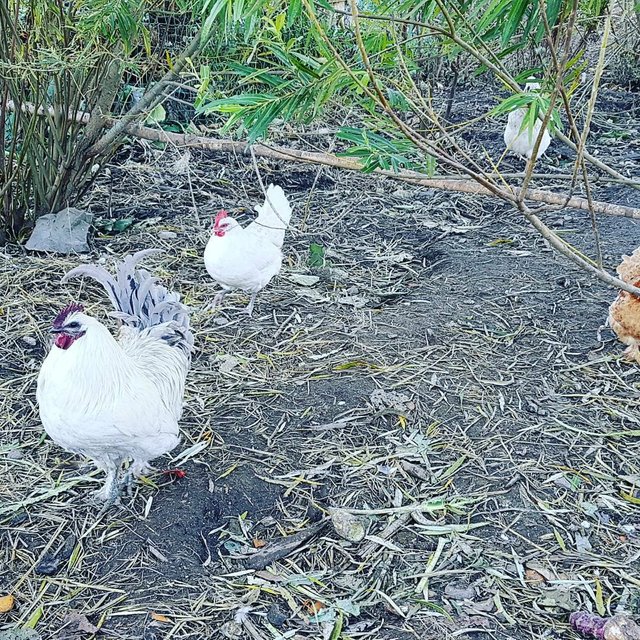
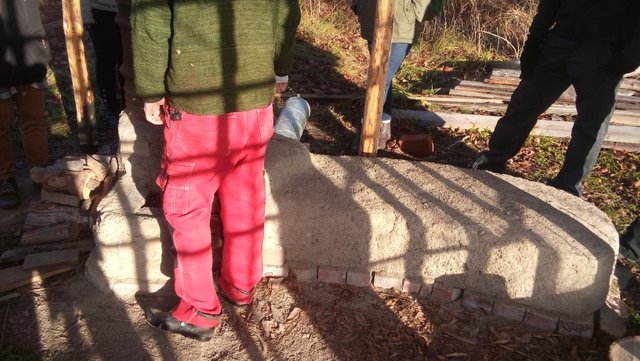
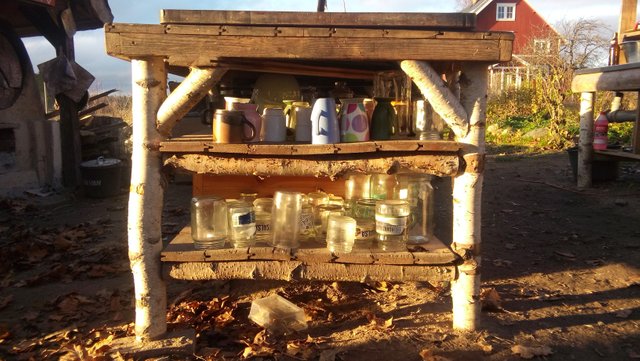
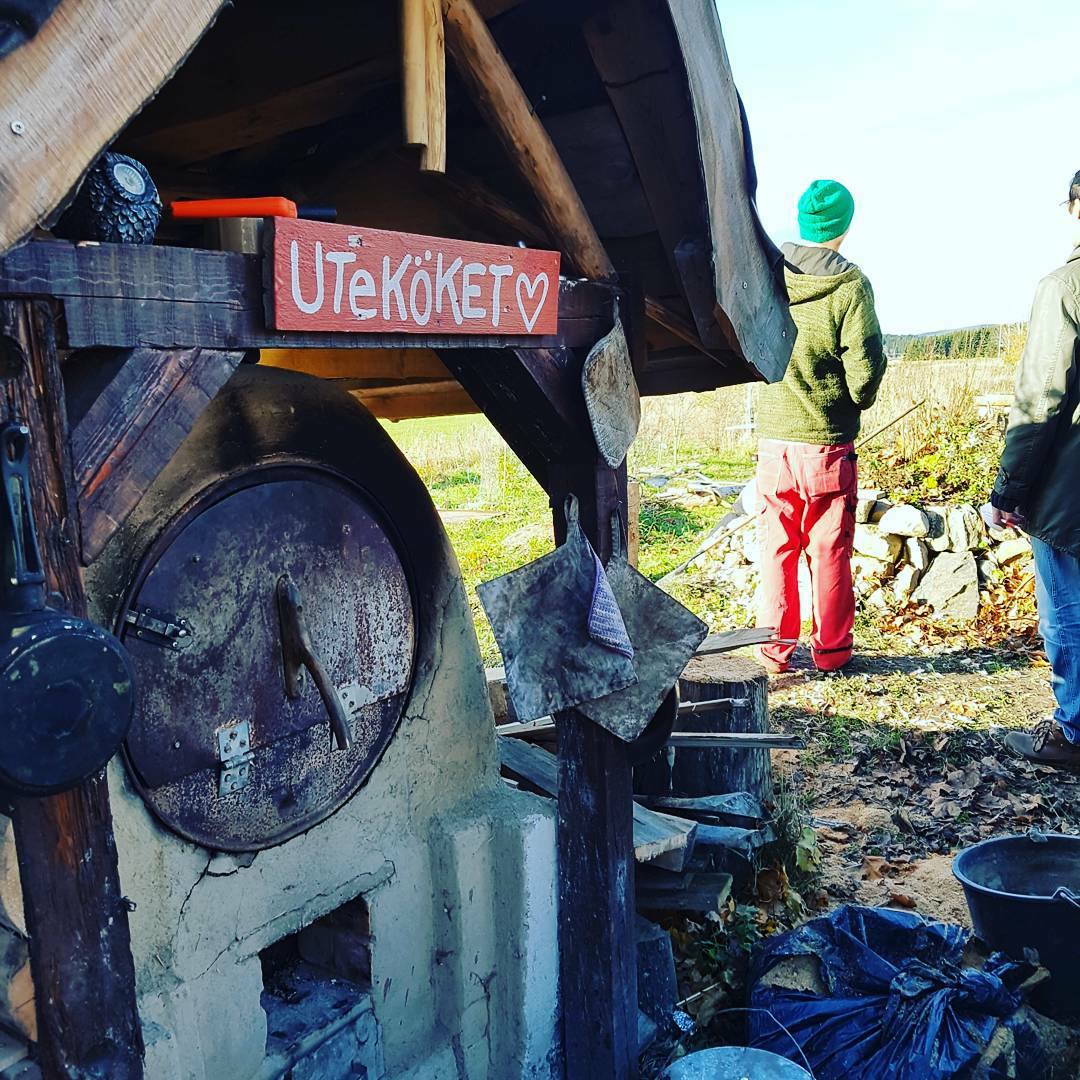
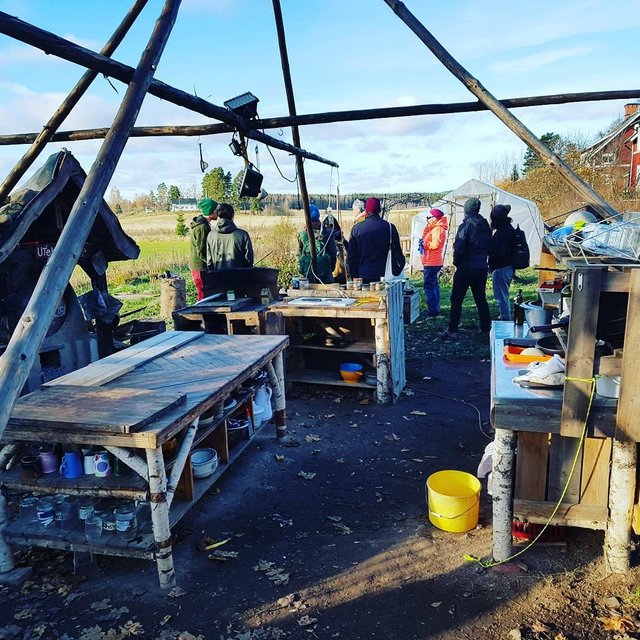
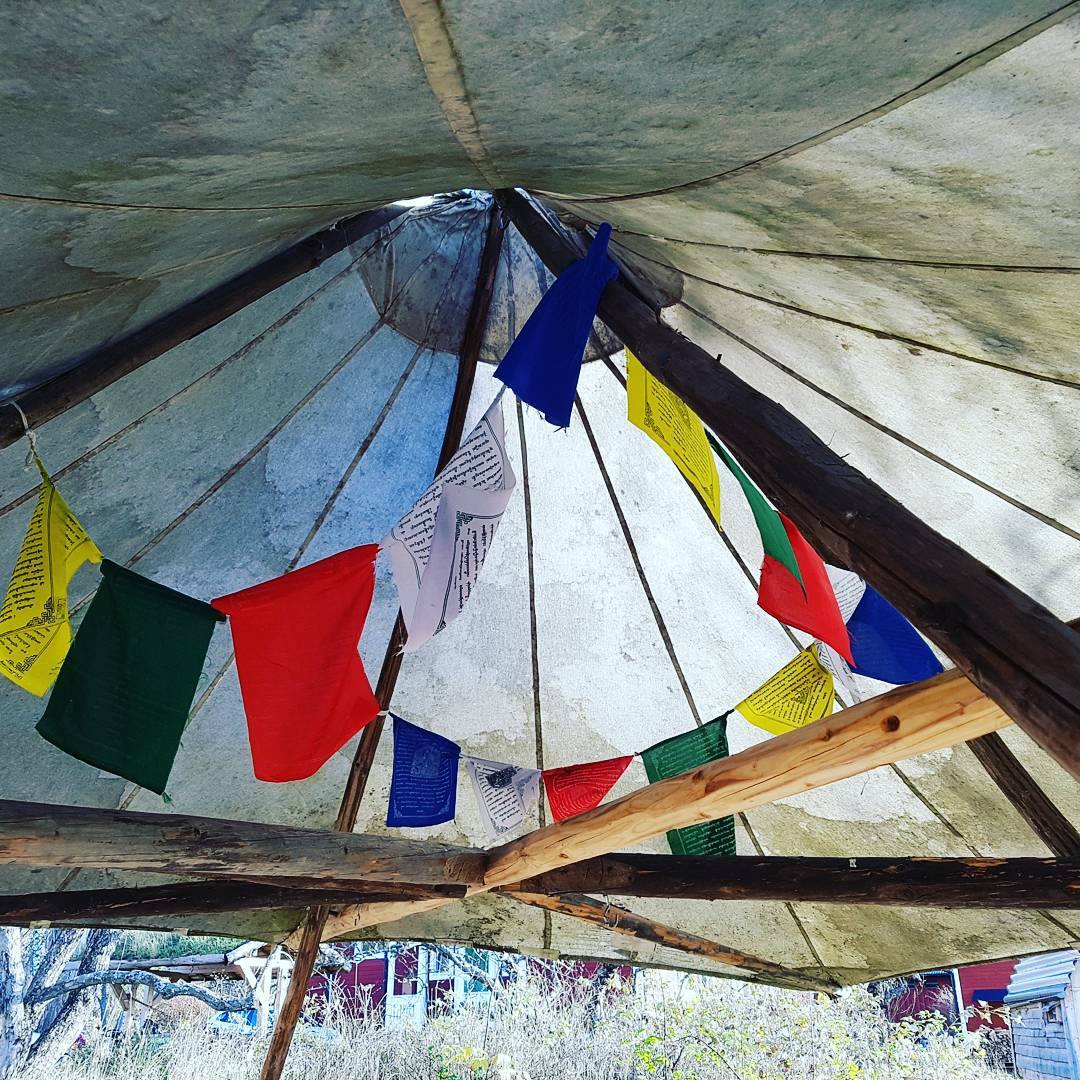
How is it possible. 66 votes cast revenue 92$
I have no clue, some strange network effect!
I know how it happened: you just put out a very wonderful post. There is a team out there who manually look out to reward posts as good as yours. ;-)
Such a wonderful post, my friend! Congratulations!
Congratulations, your post received one of the top 10 most powerful upvotes in the last 12 hours. You received an upvote from @curie valued at 53.86 SBD, based on the pending payout at the time the data was extracted.
If you do not wish to receive these messages in future, reply with the word "stop".
Congratulations @fjodde, this post is the second most rewarded post (based on pending payouts) in the last 12 hours written by a User account holder (accounts that hold between 0.1 and 1.0 Mega Vests). The total number of posts by User account holders during this period was 2082 and the total pending payments to posts in this category was $2133.89. To see the full list of highest paid posts across all accounts categories, click here.
If you do not wish to receive these messages in future, please reply stop to this comment.
Greetings from the Philippines.
This is very inspiring. do you think it's possible to visit as a volunteer in that community once I get to Sweden?
Hi grasya, since I don't know your itinerary, my suggestion is you take this map, click on every point that interests you, visit their webpage (or google their name to find the webpage) and contact them directly. Sometimes places like these have a more active Facebook page so you can try there too. Contact me if there is some information you don't understand because not every page has an English version. http://ekobyar.se/ekobyar/ The contact details for this place (Stjärnsund) that I find on their website (stjärnsund.nu) are david [at] ihop.nu and philipp [at] ihop.nu
thank you so much. i will bookmark this and hopefully get to visit a sustainable community when i get to europe
Cool, this post was in the daily top-30 popular posts https://steemit.com/life/@miso/and-a-of-i-deep-there-the-five, and in the daily top-20 in the 'blog' category https://steemit.com/blog/@vertical/blog-vertical-top-20-posts-blog-category-sorted-by-top-payout-11-7-2017
Swedish podcast about alternative lifestyles "andra sätt" (=other ways) https://castbox.fm/channel/Andra-s%C3%A4tt-id61503?country=us